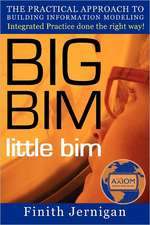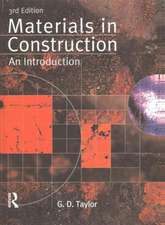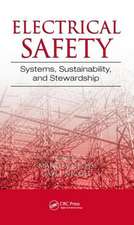Frost Resistance of Concrete
Autor R Auberg, M.J. Setzeren Limba Engleză Hardback – 4 sep 1997
| Toate formatele și edițiile | Preț | Express |
|---|---|---|
| Paperback (1) | 472.10 lei 6-8 săpt. | |
| CRC Press – 12 dec 2019 | 472.10 lei 6-8 săpt. | |
| Hardback (1) | 1828.45 lei 6-8 săpt. | |
| CRC Press – 4 sep 1997 | 1828.45 lei 6-8 săpt. |
Preț: 1828.45 lei
Preț vechi: 2651.57 lei
-31% Nou
Puncte Express: 2743
Preț estimativ în valută:
349.92€ • 363.97$ • 288.88£
349.92€ • 363.97$ • 288.88£
Carte tipărită la comandă
Livrare economică 14-28 aprilie
Preluare comenzi: 021 569.72.76
Specificații
ISBN-13: 9780419229001
ISBN-10: 0419229000
Pagini: 366
Dimensiuni: 156 x 234 x 27 mm
Greutate: 0.82 kg
Ediția:1
Editura: CRC Press
Colecția CRC Press
ISBN-10: 0419229000
Pagini: 366
Dimensiuni: 156 x 234 x 27 mm
Greutate: 0.82 kg
Ediția:1
Editura: CRC Press
Colecția CRC Press
Cuprins
Part 1: Material Parameters and Concrete Design. The Influence of material paarameters on freeze-thaw resistance with and without deicing salt. Effects of fly ash on microstructure and deicer salt scaling resistance of concrete. Laboratory and field studies of salt scaling in fly ash concrete. influence of the type of cement on the freeze-thaw resistance of the mortar phase concrete. Frost resisting and waterproof fine-grained slag ash concrete for roofs of residential structures. Water resistance low water consumption plaster binder. Influence of sand on the freeze-thaw resistance of the mortar phase of concrete. Investigations on freeze-thaw resistance of recycling concrete. Freeze-thaw resistance of concrete with recycled aggregaates. Part 2: Chemical Parameters Frost resistance with and without deicing salt - a purely physical problem? Influence of C3A content and scaling resistance. Influence of cement type on resistance against freezing and thawing, with or without deicing chemicals, of cement mortar. Freeze-deicing salt resistance of concretes containing cement rich in slag. Frost and frost-deicing salt resistance of supersulphated cement concrete. Scorpion and chlorides on hydrated cements and C3S pastes. Part 3: Physical Parameters and Testing Basis of testing the freeze-thaw resistance: surface and internal deterioration. Effect of finishing, forming and curing on de-icer salt scaling resistances of concretes. Influence of preconditioning on scaling resistance for different types of test surfaces. An experimental study on frost resistance of concrete considering drying effects. A mechanism of frost damage of concrete under supercooling. Length changes of concrete speciment during frost deicing salt resistance test. Moisture absorption from salt solutions in cement mortar discs during freezing. Influence of water uptake during freezing and thawing. Scaling and internal crackling in wet freeze/thaw testing. The infrared thermal image characteristic and injured degree evaluation of freeze-thaw injured concrete. Testing of freeze-thaw resistance portland cement compositions by low temperature dilatometry. The reasons of damping maximums of hardened cement paste (hcp) at extremely low temperature. Subzero temperature investigation of autoclaved concrete with gypsum added. Damping measurements for nondestructive evaluation of concrete beams. Standard methods for freeze-thaw tests: a European research programme. Frost failure and rapid test method of concrete frost resistance. Concrete frost resistance test methods. Tempperature shock test for the determination of the freeze-thaw resistance of concrete. Internal frost attack-state of the art.
Descriere
This book forms the proceedings of the international workshop to be held in Essen, Germany. This workshop summarises the conclusion of the technical committee's investigations into the resistance of concrete to freeze-thaw attack, specific in this to resistance with or without de-icing chemicals. It presents the RILEM recommendations on testing the freeze-thaw and de-icing salt resistance of concrete.
























